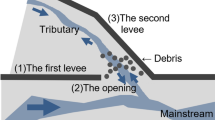
Overview
- Proposes unique use of abandoned, once-cultivated land for biodiversity conservation and disaster management
- Includes many figures to show survey results in an easy-to-understand manner
- Is based on the author’s extensive research
Access this book
Tax calculation will be finalised at checkout
Other ways to access
About this book
Similar content being viewed by others
Keywords
Table of contents (15 chapters)
-
Front Matter
-
Flood Control
-
Front Matter
-
-
Paddy Fields
-
Front Matter
-
-
Case Study of a River
-
Front Matter
-
-
Case Study of Paddy Fields
-
Front Matter
-
-
Wetland Development
-
Front Matter
-
Authors and Affiliations
About the author
Bibliographic Information
Book Title: Wetland Development in Paddy Fields and Disaster Management
Authors: Akira Matsui
DOI: https://doi.org/10.1007/978-981-19-3735-4
Publisher: Springer Singapore
eBook Packages: Earth and Environmental Science, Earth and Environmental Science (R0)
Copyright Information: The Editor(s) (if applicable) and The Author(s), under exclusive license to Springer Nature Singapore Pte Ltd. 2022
Hardcover ISBN: 978-981-19-3734-7Published: 27 August 2022
Softcover ISBN: 978-981-19-3737-8Published: 28 August 2023
eBook ISBN: 978-981-19-3735-4Published: 26 August 2022
Edition Number: 1
Number of Pages: XV, 262
Number of Illustrations: 35 b/w illustrations, 162 illustrations in colour
Topics: Natural Hazards, Ecology, Biodiversity, Agriculture



